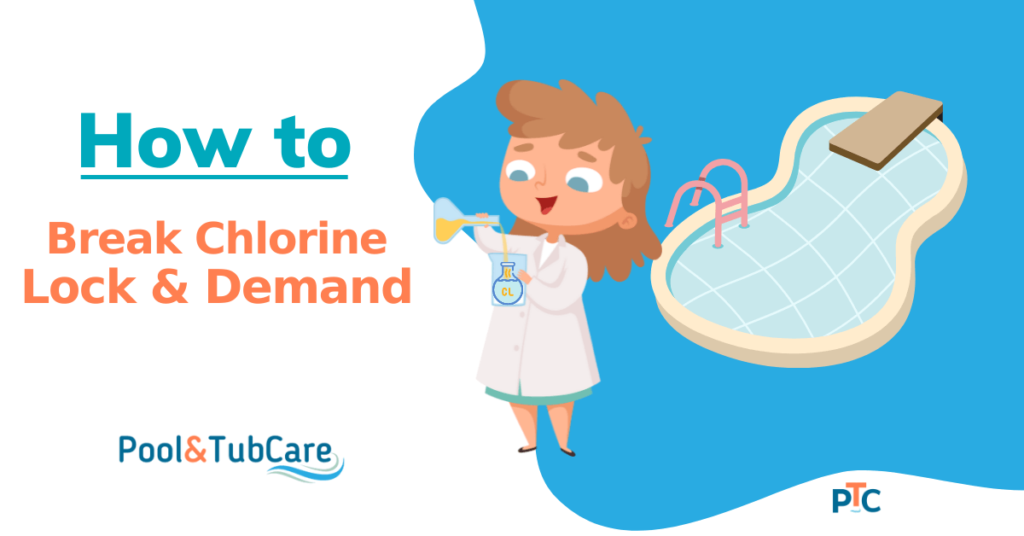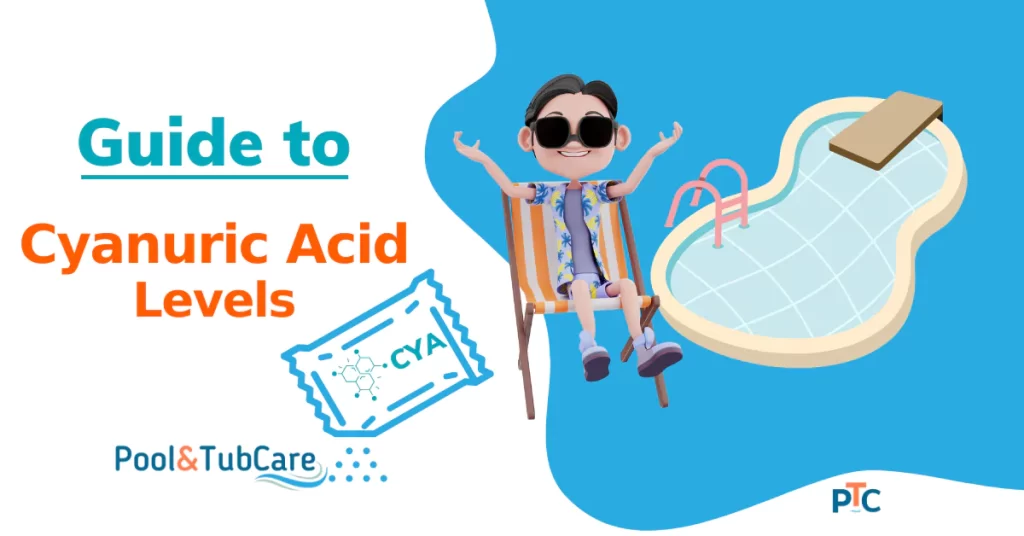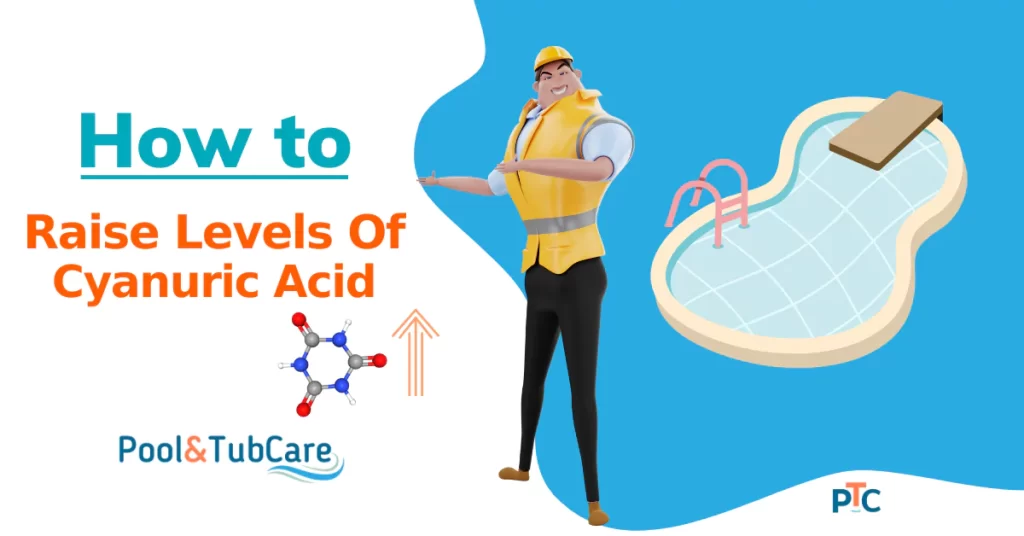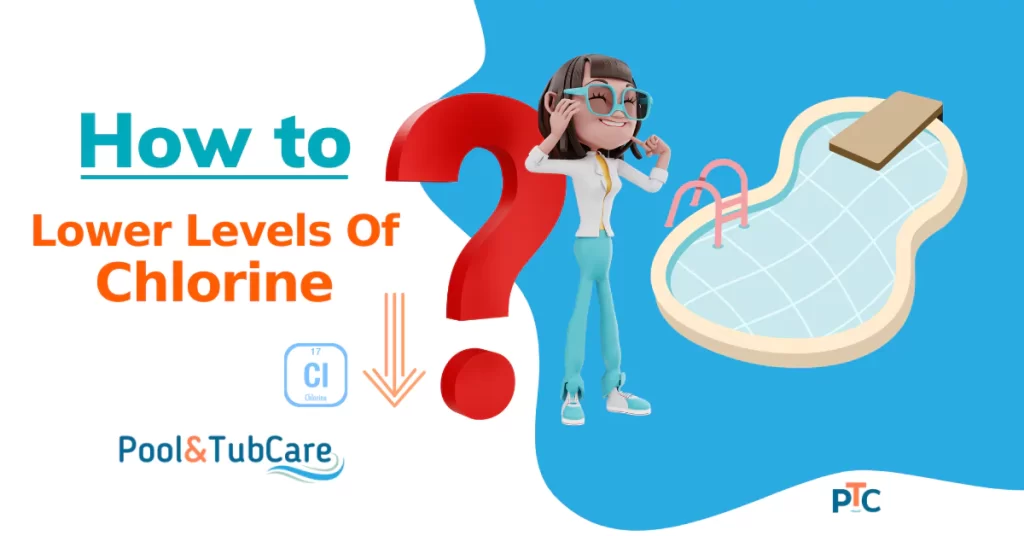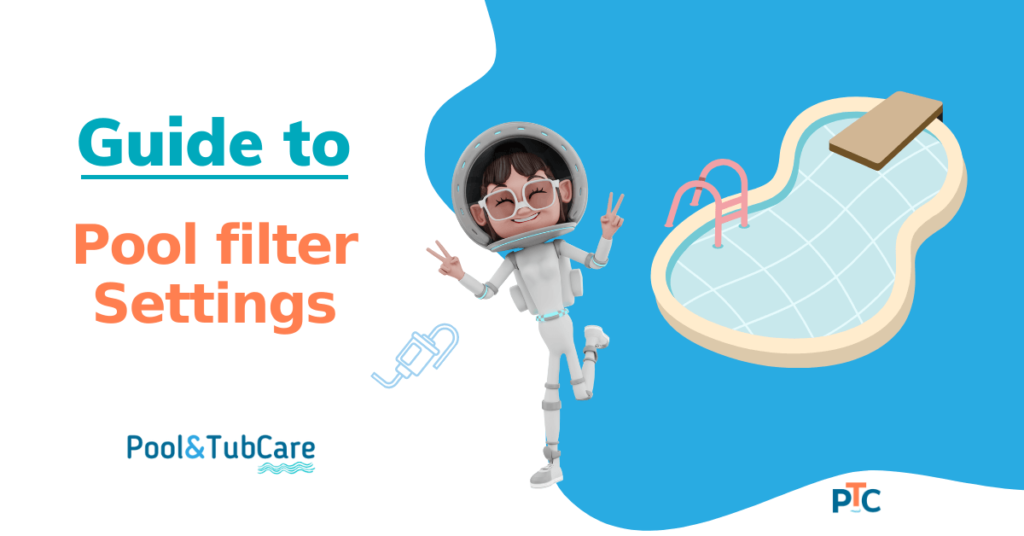Chlorine is the single most important chemical for the health of your pool. You add chlorine to your pool, and it sanitizes the water. But sometimes, whatever the amount of chlorine you add, it refuses to clean the pool.
When free chlorine reading won’t go up even after adding chlorine, it is generally called as chlorine lock. Chlorine lock simply means the amount of chlorine in your pool is ineffective in clearing the organic matter. You can break the chlorine lock and Chlorine demand by shocking your pool or refilling a part of the pool with fresh water. Cyanuric acid reducers sometimes help break chlorine lock, but that is rare.
Chlorine lock is also often interchangeably used as Chlorine demand, but it’s not exactly the same.
In this article, I will discuss how to get your chlorine to work, whether it’s ineffective due to chlorine lock or chlorine demand.
What is Chlorine Lock
It’s a controversial term, and some experts claim it does not exist but is just used for chlorine demand.
According to other pool experts, when you add too much cyanuric acid, which is used as a chlorine stabilizer, it “locks up chlorine” and renders it ineffective.
Chlorine, in its free form, is very prone to UV rays. In fact, in direct sunlight, 50% of free chlorine is oxidized and broken down in 17 minutes. Cyanuric acid is a stabilizer that binds with chlorine and protects it against sunlight.
When cyanuric acid binds with chlorine, it also reduces its sanitizing power, also called oxidation-reduction potential.
After binding with cyanuric acid, chlorine can still sanitize the pool but slowly, as it must first unwind from the cyanuric acid and then bind with the waste material to form chloramines.
But if there is too much cyanuric acid in the pool, it will make chlorine less effective, and at one point, chlorine might become completely ineffective.
The ideal range of cyanuric acid is 30 to 50 ppm. New studies show that their ratio is more important than free levels of chlorine and cyanuric acid.
Chlorine works best in an 11 to 13 ratio to cyanuric acid. That means if your pool’s free chlorine levels are 3, the ideal cyanuric acid level is 33-39.
If you add a lot of chlorine and still free chlorine levels are not going up, it might be due to higher cyanuric acid.
Test the cyanuric acid levels, and if they are above the acceptable levels, it might be the reason for chlorine ineffectiveness, and you need to lower them.
Related: Ideal chlorine levels for pool water!
How to Break Chlorine Lock/ Reduce Cyanuric Acid
If the cyanuric acid levels are too high in your pool water and they are coming in the way of chlorine function, you need to bring them down for your pool chemistry to function normally.
Cyanuric acid is already added to many chlorine products you use, such as chlorine tablets and dichlor shock.
If your pool cyanuric acid levels are on a higher border level, start using products without CYA. But if CYA levels are already high, they won’t go down on their own, even if the water evaporates.
You need to do some work to bring its levels down.
Note: Before jumping the gun, you should also check with a different kit as sometimes the testing kits may be faulty, or the reading in your pool is above the testing range of the kit, and it may show them as zero.
Related: Learn ideal pool water chemistry!
Replace a Part of Water
Your best bet the lower the cyanuric acid levels are replacing a part of the water with fresh water.
Empty one-fourth of the pool and replace it with fresh water. The addition of fresh water will reduce the cyanuric acid levels, and it will also dilute other chemicals.
Backwash the filters before adding fresh water. Then circulate the fresh water for a few hours to mix properly, then test the water.
If the CYA levels are still not down to the desired level, you need to repeat the step of refilling one-fourth of the pool again.
Use Cyanuric Acid Reducer
One option that you can use is a cyanuric acid reducer. When added to the pool, this chemical slowly breaks down the cyanuric acid and reduces its levels.
It might take a week to work and reduce the cyanuric acid levels.
But many users claim that it does not work and on top of that its prices are also relatively high. If the money and time are not the issues, then you might try this method as the other method take much more effort.
You might be one of the lucky ones whose problem gets solved by this chemical. And it might be your best option in areas with water restrictions.
Chlorine Demand
If your pool water’s free chlorine level reading is coming up to zero after adding any amount of chlorine, you might have a problem of chlorine demand.
It is different from the chlorine lock in the definition that the chlorine you are adding is working and is being used immediately. The water has so many impurities that it demands more chlorine, and the chlorine reading is coming up as zero.
If cyanuric acid levels and pH levels are normal and still chlorine levels are low, your pool probably suffers from chlorine demand.
You need to add more free chlorine to work against the organic material in your pool.
Causes of the Chlorine Demand
There are a few reasons that may lead to chlorine demand.
A high bathing load can be one of the reasons for chlorine demand. If you have a pool party with many people, there is bound to be a lot of organic material in the pool, like sweat, oils, etc.
If the cyanuric acid levels in your pool are less than 30, then chlorine might be getting oxidized too quickly, leaving nothing behind. Without a stabilizer, the chlorine gets used up in a few hours in direct sunlight as UV rays react with it.
Test the cyanuric acid levels and ensure they are in an ideal range.
Another reason for the chlorine demand could be rain and thunderstorms. Depending on the composition of the rain, it may imbalance the chemical balance and also bring in a lot of debris into the pool, which may lead to chlorine demand.
Most pool owners face chlorine demand issues when they open the pool after long breaks, like after winters. It may happen that over time when the pool is not maintained properly, it may accumulate a lot of organic material.
When you start sanitizing your pool, it needs a lot of chlorine to get the desired results.
If algae are in the pool, it may use too much free chlorine, and your chlorine reading may show zero.
How to Get Rid of Chlorine Demand
Whatever the reason for the chlorine demand, the solution is still more chlorine.
You need to add more chlorine and shock your pool to cure the chlorine demand. Shocking your pool involves adding more amount of free chlorine to reach the breakpoint so that combined chlorine can be broken down to free chlorine.
When dealing with chlorine demand, triple shock is recommended.
Calculate your pool water volume and decide how much shock amount you need.
The shock will also help eliminate all the contaminants that are using up all your chlorine; after the shock, a normal amount of chlorine can work smoothly.
Make Your Chlorine Effective Again
Whether it’s chlorine lock or demand, whatever term different pool experts use, it is basically chlorine ineffectiveness. Our aim is to get it working so that our pool stays crystal clear and safe to swim.
If your free chlorine levels are not going up, first check the levels of Cyanuric acid, pH, and alkalinity. All these levels are acceptable, and still adding more chlorine is not increasing your reading, then you need to shock your pool to get it working.
If you regularly shock your pool and keep a tab on the chlorine levels, such problems will not happen.
For any reason you got this problem, you can treat it with the above steps and get your pool ready for the next backstroke.

